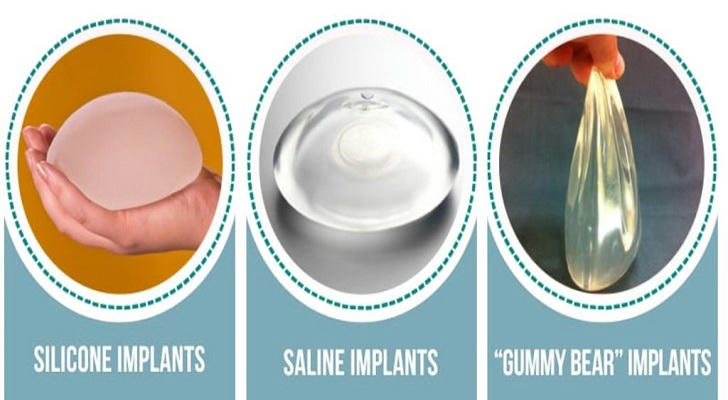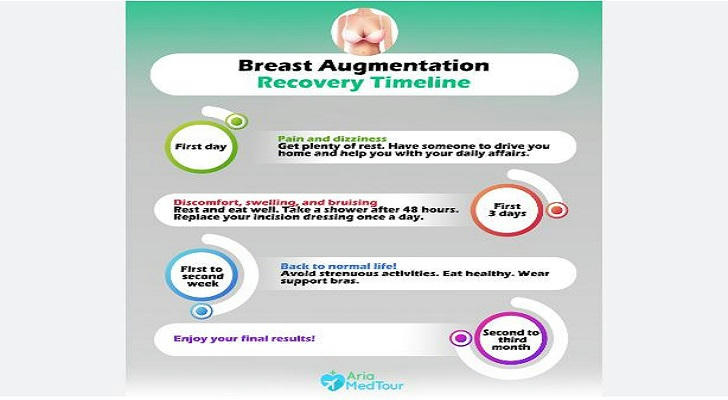This is the most comprehensive introduction to breast augmentation surgery you have ever seen.
Today, more and more people are choosing breast augmentation surgery. Whether you're seeking fuller breasts, aiming to counteract sagging caused by significant weight loss, pregnancy, or breastfeeding, looking to correct asymmetry or other breast deformities, or you are a transgender individual...

Currently, there are three main types of implants: saline, silicone, and gummy bear implants.
Saline Implants: Filled with sterile saltwater, which can be adjusted during surgery. If they leak, the saline is safely absorbed by the body.
Silicone Implants: Filled with silicone gel that feels more like natural breast tissue.
Gummy Bear Implants: A type of silicone implant with a thicker gel that holds its shape better and is less likely to leak.
Silicone and gummy bear implants generally look and feel the most natural because their gel mimics the texture of natural breast tissue better than saline. Breast implants typically last 10-20 years or longer with proper care and avoiding activities that could harm your body.
About Surgical Methods

Currently, there are three common surgical approaches: under the breast, around the nipple, or in the armpit. Implants are placed beneath the breast tissue or chest muscle, and the incision is closed with sutures, resulting in fuller breasts after recovery.
Which method is best?
Let me explain their advantages and disadvantages:
Under the Breast (Inframammary Incision):
Best control for the surgeon, allowing precise placement. Suitable for all implant types and sizes. Scars are usually hidden in the natural breast fold. There will be a scar under the breast, though it's often hidden.
Around the Nipple (Periareolar Incision):
Scars blend with the edge of the areola, making them less noticeable. Provides good access for implant placement.Slightly higher risk of affecting nipple sensation or breastfeeding ability.
In the Armpit (Transaxillary Incision):
No scars on the breast itself; scars are hidden in the armpit.Less control for the surgeon, making precise placement more challenging. Recovery might be more uncomfortable due to the armpit location.
You should discuss your options with your doctor to choose the method that best suits your needs.
About Recovery

The surgery typically takes 1-2 hours. Recovery time varies. After the surgery, it's normal to experience soreness, tightness, and pressure in the chest area, which can be managed with prescribed painkillers. You'll experience pain, swelling, and bruising for a few days to weeks. During this time, you need to wear a supportive bra and avoid strenuous activities.
You can resume light activities within a week and return to full activities in 4-6 weeks.
About Costs
Costs vary depending on the surgeon, location, and type of implants, typically ranging from $3,000 to $10,000. Note that breast reconstruction after mastectomy or due to congenital deformities might be covered by insurance. If you don't have the funds upfront, some surgeons offer financing options or payment plans to help you proceed with the surgery.
About Results

You'll see initial results immediately after surgery, with breast size related to the implant size you chose. The implants will make your breasts visibly fuller, though swelling might temporarily alter the contour. Don't worry; the final results will become clear after a few weeks to months, revealing fuller and more attractive breasts.
About Risks

All surgeries come with risks. Before undergoing surgery, it's advisable to undergo thorough evaluations and discuss potential risks with your doctor to minimize complications.
Real Case Studies

Here are some real stories about how breast augmentation can help people feel more confident:
Case 1: Sarah, a 35-year-old mother of two, noticed a significant change in her breasts after breastfeeding. Feeling self-conscious, she had breast augmentation surgery to restore her pre-pregnancy look. After surgery, her clothes fit better and she felt more confident socially and professionally.
Case 2: Jenna, 28, had stopped growing breasts since her teenage years and felt her breasts were too small when she wore tight clothing and swimsuits. She chose breast augmentation to make her breasts fuller. After surgery, she felt more confident and willing to show off her body.
Case 3: Emily, a 45-year-old breast cancer survivor, had a mastectomy and breast reconstruction as part of her cancer treatment. While the reconstruction helped, it didn't meet her expectations. She chose breast augmentation to achieve a fuller, more natural look. After surgery, she felt a new sense of femininity and confidence.
These stories show that breast augmentation can help people feel better about their appearance and boost their self-esteem.
Tip: When choosing a surgeon, be wary of false claims and choose a reputable clinic with a good track record.
Hopefully this guide will help you understand breast augmentation surgery better!
